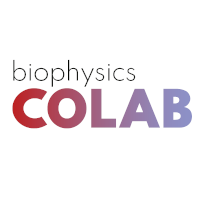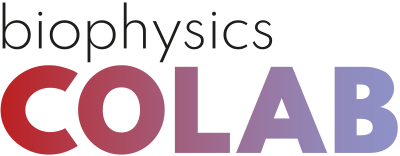Semi‐synthetic nanobody‐ligand conjugates exhibit tunable signaling properties and enhanced transcriptional outputs at neurokinin receptor‐1
This article has been Reviewed by the following groups
Listed in
- Reviewed articles (Biophysics Colab)
- Reading list (BiophysicsColab)
Abstract
Antibodies have proven highly valuable for therapeutic development; however, they are typically poor candidates for applications that require activation of G protein‐coupled receptors (GPCRs), the largest collection of targets for clinically approved drugs. Nanobodies (Nbs), the smallest antibody fragments retaining full antigen‐binding capacity, have emerged as promising tools for pharmacologic applications, including GPCR modulation. Past work has shown that conjugation of Nbs with ligands can provide GPCR agonists that exhibit improved activity and selectivity compared to their parent ligands. The neurokinin‐1 receptor (NK1R), a GPCR targeted for the treatment of pain, is activated by peptide agonists such as Substance P (SP) and neurokinin A (NKA), which induce signaling through multiple pathways ( G s , G q and β‐arrestin). In this study, we investigated whether conjugating NK1R ligands with Nbs that bind to a separate location on the receptor would provide chimeric compounds with distinctive signaling properties. We employed sortase A‐mediated ligation to generate several conjugates consisting of Nbs linked to NK1R ligands. Many of these conjugates exhibited divergent and unexpected signaling properties and transcriptional outputs. For example, some Nb‐NKA conjugates showed enhanced receptor binding capacity, high potency partial agonism, prolonged cAMP production, and an increase in transcriptional output associated with G s signaling; whereas other conjugates were virtually inactive. Nanobody conjugation caused only minor alterations in ligand‐induced upstream G q signaling with unexpected enhancements in transcriptional (downstream) responses. Our findings underscore the potential of nanobody conjugation for providing compounds with advantageous properties such as biased agonism, prolonged duration of action, and enhanced transcriptional responses. These compounds hold promise not only for facilitating fundamental research on GPCR signal transduction mechanisms but also for the development of more potent and enduring therapeutics.
Article activity feed
-

Consolidated peer review report (22 January 2024)
GENERAL ASSESSMENT
Nanobodies (Nbs) are small antibody fragments that function similarly to antibodies. The smaller size of nanobodies makes them useful tools for studying biology and potentially useful as therapeutics. Nanobodies have had a significant impact on research related to the structure and function of G protein-coupled receptors (GPCRs), a family of proteins that are the target of approximately 30% of approved drugs. Nanobodies fused to peptide agonists can potentially increase the potency and selectivity of ligands.
The manuscript by Nayara Braga Emidio and Ross Cheloha describes the fusion of peptide agonists to Nbs to create chimeric ligands that differentially modulate the molecular pharmacology of the Neurokinin 1 receptor (NK1R), a potential therapeutic target for the …
Consolidated peer review report (22 January 2024)
GENERAL ASSESSMENT
Nanobodies (Nbs) are small antibody fragments that function similarly to antibodies. The smaller size of nanobodies makes them useful tools for studying biology and potentially useful as therapeutics. Nanobodies have had a significant impact on research related to the structure and function of G protein-coupled receptors (GPCRs), a family of proteins that are the target of approximately 30% of approved drugs. Nanobodies fused to peptide agonists can potentially increase the potency and selectivity of ligands.
The manuscript by Nayara Braga Emidio and Ross Cheloha describes the fusion of peptide agonists to Nbs to create chimeric ligands that differentially modulate the molecular pharmacology of the Neurokinin 1 receptor (NK1R), a potential therapeutic target for the treatment of pain. The authors observe that Nb-peptide fusions display divergent pharmacology to that of the unfused peptides via extensive characterisation at multiple signalling pathways (cAMP, Ca2+ mobilization, direct Gq TruPATH measurements, and β-arrestin recruitment), receptor binding assays, and measures of downstream transcriptional activation. The pharmacology results show that these conjugates exhibit diverse and unexpected signalling properties, including enhanced receptor binding, high potency partial agonism, prolonged cAMP production, and altered transcriptional outputs.
However, the degree to which signalling was altered was highly dependent on the location of the epitope tag and the utilized Nbs with small alterations in the relative distance and orientation between the Nb epitopes and peptide binding sites, causing significantly different outcomes. These findings highlight the potential of nanobody conjugation for creating compounds with biased agonism, extended duration of action, and improved transcriptional responses, suggesting their promise for research on GPCR signal transduction mechanisms. This study also lays the groundwork for important considerations regarding optimising nanobody-peptide fusions. Importantly, for peptide discovery, these approaches may afford improved properties regarding selectivity and duration of action. Overall, this work suggests an opportunity to create long-acting agonists with enhanced signalling properties using nanobody-peptide conjugates. However, this would require further experiments to validate the mechanism of the altered pharmacology responses of the Nb conjugates.
RECOMMENDATIONS
Essential revisions:
Because no known Nbs bind to WT NK1R, the authors have fused the epitopes of three different Nbs (6e, alpha, BC2) to the N-terminus of NK1R. These epitope tags could alter the pharmacology of the endogenous ligand Substance P (SP) with respect to the WT receptor. A comparison of signalling for WT versus the epitope-tagged NK1R in Figure 1C would alleviate these concerns.
The expected masses of the Nb conjugates after sortagging are sometimes over or under the expected masses (Table S2). Could the authors clarify the reason for these differences in the text.
Based on the results of Figure 2, all Nb conjugates, including the negative control NbGFP-peptide, negatively impact signaling by reducing efficacy in cAMP production (which is completely abolished for Nb-SP6-11) and reducing potency in β-arrestin and Gq activation. This could be due to differences in the binding of conjugated NKA compared to non-conjugated NKA due to conformational constraints or by hindering access of the peptides to the orthosteric pocket. In addition, it is unclear if the Nbs alter NK1R signaling on their own or if they act as allosteric modulators. These concerns could be experimentally addressed in both functional and binding experiments using 1) unconjugated Nbs and 2) unconjugated Nbs and peptides.
Compared to the Nbalpha-NKA and Nb6e-NKA conjugates, NbBC2-NKA has no effect in the cAMP assays (no increase in potency or effect in washout experiments). This is despite NbBC2-NKA having the greatest effect in binding experiments (Figure 3A,B). Can the authors discuss these differences, particularly with respect to the conclusion that a bitopic binding mechanism may contribute to prolonged signalling.
Regarding biased agonism as a potential advantage of Nb-peptide conjugates, the kinetics of β-arrestin recruitment or activation should also be measured (Figure 3) to determine if there is prolonged arrestin activation or receptor internalization.
The impact of Nb conjugation on ligand competition binding assays was assessed in Figures 3A and 3B. However, it would be useful to include the unconjugated Nbs as a control to determine if the enhanced inhibition is due to increased hindrance to the orthosteric pocket (see comment #3) or due to increased binding of the Nb-peptide conjugates as suggested. Similarly, in Fig S10, the lack of inhibition by spantide with the Nb6e-NKA could be due to reduced access of spantide to the orthosteric pocket in the presence of the Nb conjugate due to steric hindrance and testing with unconjugated Nb6e would strengthen the results.
The kinetics of cAMP signaling are assessed in Figures 3C and 3D. An EC10 concentration of G3-NKA was compared to an EC100 concentration of the other ligands, which may not be appropriate for comparisons of kinetics in this washout experiment. Do the authors have an explanation for comparing different concentrations?
In the cAMP washout experiments, cAMP production was still increased after washout (Figure 3C). Can the authors discuss why this was observed (Figure 3C).
In the transcriptional reporter assays (Figure 4), can the authors clarify why ~35nM was chosen as the concentration of peptides?
There are significant caveats with the Figure 5A model provided that the authors do not mention or address. Importantly, whilst AlphaFold 2 is useful for predicting the structure of well-ordered proteins, the relative location & orientation of these domains is unreliable when there are large flexible linkers between them; as is the case with the NK1R N-terminus. It would be at least worth mentioning this, and at best doing additional MD simulations to show the relative orientation of these two "domains". In addition, the authors should discuss the effects various linker lengths between the Nbs and peptide would have.
If the author's suggestions are true about the relative position of the epitope tag in relation to the peptide binding pocket, this could be demonstrated by making a construct where the epitope positions are swapped. Alternatively, instead of using 3x epitope-tagged constructs, single-tagged epitope NK1R constructs should demonstrate this.
There is no mention of the relative affinity of the Nb:epitope pairs and how this might influence the observed pharmacology, in particular the binding experiments with washout and readouts of transcriptional activation. This should be considered by the authors.
With respect to therapeutic relevance, how does the prolonged cAMP production or enhanced transcription correlate with their activity in pain? NK1R is a pro-nociception receptor, does this mean we need the reversed compounds or antagonists to inhibit the receptor activity? Clarification would be appreciated.
Optional suggestions:
In several instances, the authors have chosen to show a representative concentration-response curve rather than showing data that are grouped across multiple replicates (e.g. Fig S4). Consider grouping data, as is often done in the field.
In Figure S2, it is unclear which receptor construct was used in these experiments to validate the signalling of the G3-peptides. In some of the concentration-response curves (Gs Glo, Gq TRUPATH), the maximal response is not reached, and this could affect the estimation of EC50 values reported. In any case, the authors report that G3-SP6-11 has a 100-fold increased potency, indicating that the truncation of SP might already be unfavourable for signalling. Untruncated SP could be added for comparison and may have been a better choice of ligand to see whether Nb conjugation can, in fact, improve the natural NK1R agonist.
In Figure 1D, the binding of the unconjugated Nbs to the tagged receptor was tested. It would be useful to compare the binding of unconjugated Nbs with peptide-conjugated Nbs to see whether a second binding point by the peptide increases total binding.
Fig S5 shows a lot of variability between replicates in the association of the unconjugated Nbs, is this of concern?
The opposite effect of nanobody-fusion with SP6-11 in regard to the washout experiments compared to NKA are striking but somewhat confusing. Ideally, a longer linker between the fusion should be used to show that this is indeed due to steric restraint altering the peptide binding pose.
Despite the quicker washout of the Nb-fused SP6-11 peptide, there was no significant decrease in Gq-mediated transcriptional response (Fig S11). This is difficult to reconcile, given the conclusions drawn for Nb-fused NKA (opposing effects). Is this a dose issue? The authors should explain this further.
At the end of the article, there is an emphasis on the potential usefulness of translational therapeutics. It would be ideal if the authors could further expand upon the likelihood and criteria for a nanobody that would recognize the WT NK1R and could act as a peptide fusion tool i.e. how much solvent accessible surface away from the peptide binding pocket is available for NK1R, and how likely it would provide the relative distance given the findings of this work.
REVIEWING TEAM
Reviewed by:
Reviewer #1: molecular pharmacology of pain-related GPCRs
Reviewer #2: structure and pharmacology of GPCRs
Reviewer #3: structure and pharmacology of pain-related GPCRs
Curated by:
David Thal, Senior Research Fellow, Monash University, Australia
(This consolidated report is a result of peer review conducted by Biophysics Colab on version 1 of this preprint. Comments concerning minor and presentational issues have been omitted for brevity.)
-
-

